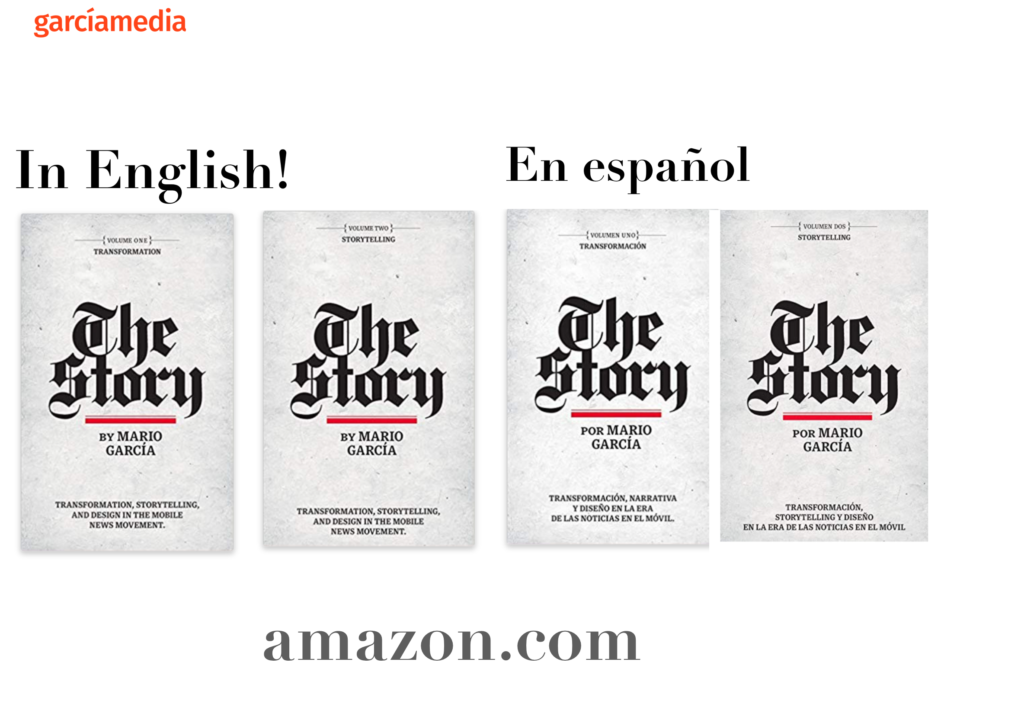
Our journalistic craft is in a constant state of evolution. As I prepare to plan my Columbia University course, Multiplatform Design & Storytelling, I know that I have to emphasize the important link that journalism and technology now share.
This is a thought that has been germinating in my mind for a long time now. It is a reality that I experience as I work as a consultant with media houses worldwide. We can no longer separate how stories flow, how they are updated, how they are promoted in social media and via newsletters, and the technology that allows for the constant flow of information.
This is not to say that journalists need to turn into coders. Not at all, and I do not spend any class time on that subject. However, I want to spend more time throughout the semester, and starting with the introductory lecture on day one, to emphasize that a journalist today must understand those processes that technology allows for us to keep information current, tell stories in a more mobile-friendly manner, and become aware of the data that can immediately tell us how the content we produce is consumed.
As I organize my thoughts, I am happy to read that at one of my favorite newspapers, The Washington Post, the idea of how journalism and technology blend is not an abstract thought, but a strategic plan of action.
From The Washington Post

The emphasis on collaboration was a theme that Kat Downs Mulder, Managing Editor, expanded upon during a recent Web Summit in Lisbon: “The journalists who rise today are the ones who can adjust and learn with other people really well. We emphasise the ability to open-mindedly talk about a story before we even start creating it – what format will work best for it.”
She added: “We’re not looking for journalists who can code, but we are looking for journalists who can spot a story and package that information in compelling ways.”
Downs Mulder explained that every person at the Post had access to the performance of their own stories, “We share a lot of information so that journalists can understand better how their work resonates with readers – what we’re looking for ultimately is impact.”
However, for me, a highlight of Downs Mulder’s comments was this:
A combination of relevance and format is something we’re going to experiment a lot with moving forwards.
A combination of relevance and format is something we’re going to experiment a lot with moving forwards.
Kat Downs Mulder, Managing Editor, the Washington Post
Initial thoughts to guide my course at Columbia

- Today’s journalist must embrace the technology that allows for stories to flow more efficiently and to be consumed in a variety of formats.
- Before a journalist begins to conceptualize a story, she must think of the most adequate format to tell that story, emphasizing the mobile platform in which it is likely to be consumed.
- The thinking in the planning of all stories must be from small to large.
- The planning, writing, editing and designing of a story must embrace linear movement (as in scrolling) as opposed to the classic horizontal formats of print and large computer screens.
- The journalist of today knows how to promote his story via social media.
- The journalist of today understands the power of e-newsletters and masters the craft of composing them.
- The journalist of today looks as data as a way to evaluate her own work, know how stories are received and consumed.
- The best journalists of today learn to think like product engineers.
A new syllabus for a new era
Amazing how the course syllabus of last semester begins to look like that pair of jeans you no longer fit in. That’s how fast our craft changes. I see this as positive and energizing.
We must write, edit and design for consumers that are mostly getting information on the small screen of a phone.
We must learn to “seduce” with a first headline and screen, in a short four seconds.
We must pay attention to what is the most shareable element of the story, and try to push that to the top as much as possible.
Challenging, yes. Fascinating and a way to push our craft as far as we can, appealing to various senses and telling stories with the tools of a documentary cinematographer, a dynamic radio presentation and the best of television journalism.
No better time to be a storyteller.
Keynoting Mobile Studies Congress 2021 this November 12!
Honored to be chosen as one of the keynote speakers at the Mobile Studies Congress 2021, a program of the University of Nottingham Ninabo China, in collaboration with the Mobile Innovation Network & Association (MINA, Australia) and Institute for Mobile Studies (IMS, UNNC), and College of Media and International Culture, Zhejiang University.
The general theme of the congress is Go Mobile, Stay Sustainable. This is a virtual congress and my keynote is titled: Storytelling, the Mobile Way: Experience from US. While my keynote is scheduled for Nov. 13 at 10 am, China time, I will be actually doing it from my living room Nov. 12 at 10 pm! For the full program go here:
Our mobile storytelling workshops now available remotely

Professors: get your review version of The Story on time for fall classes
As an academic, I know the importance of having the right tools to advance our students, especially on the important subject of mobile storytelling. Please drop me an email if you would like to sample The Story in its digital edition: mario@garciamedia.com
Start writing or type / to choose a block


The full trilogy of The Story now available–3 books to guide you through a mobile first strategy. Whether you’re a reporter, editor, designer, publisher, corporate communicator, The Story is for you! https://amazon
TheMarioBlog post # 3331